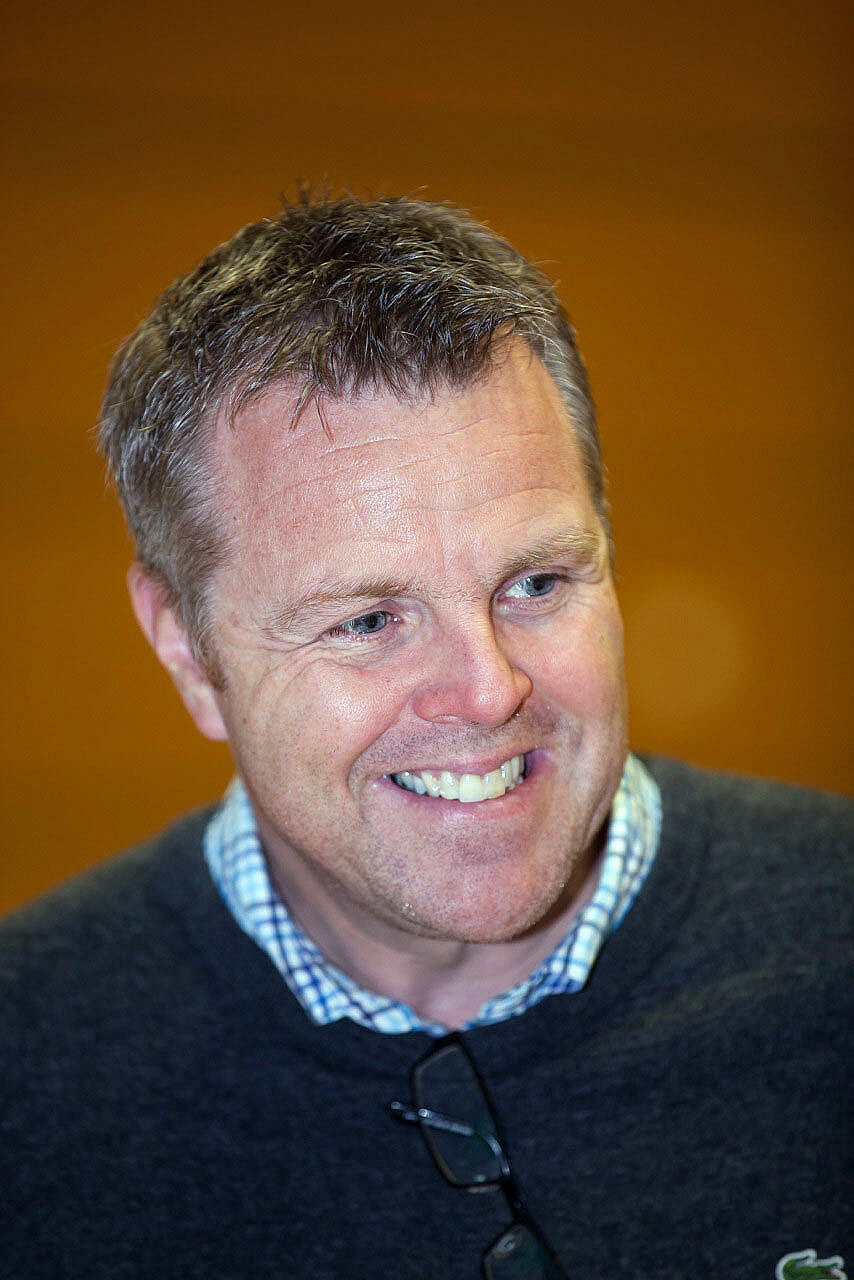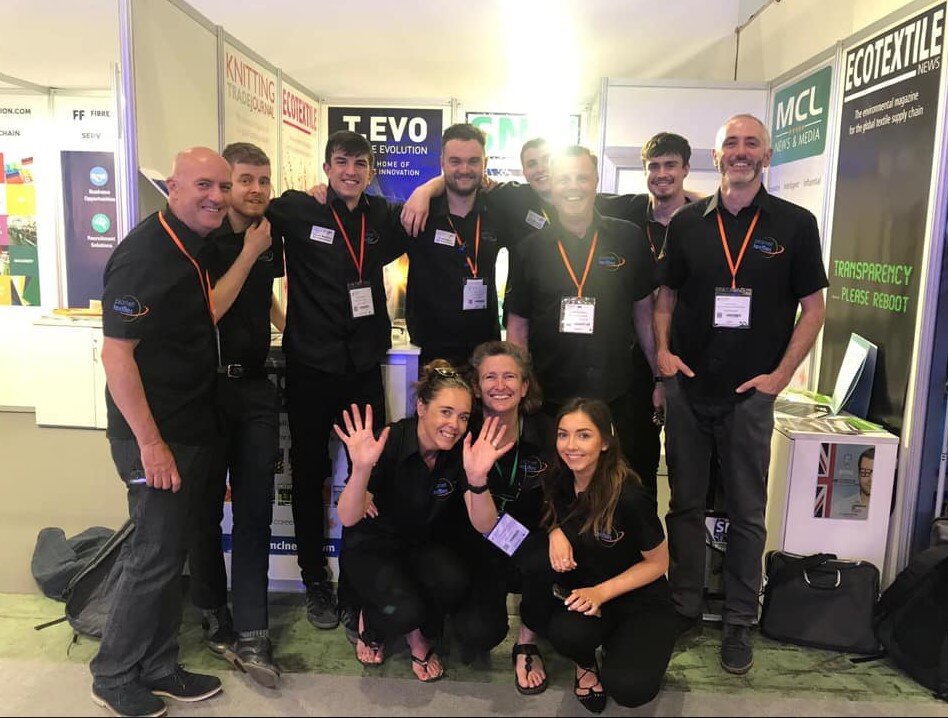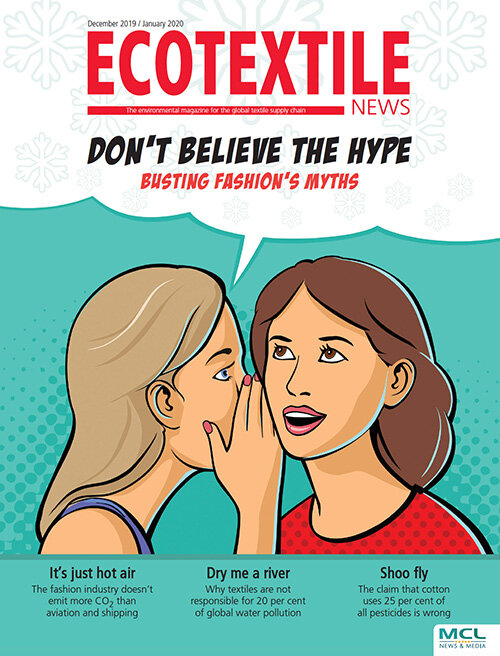After witnessing the devastating impacts of textile production on the environment first-hand, and identifying the industry’s need for a specific publication on these issues, John Mowbray re-mortgaged his house, left his job, and launched Ecotextile News. The publication has since gone on to become an influential voice among retailers, brands, suppliers and NGO’s alike, covering the environmental impacts and developments of textile production throughout the entire supply chain.
After witnessing the devastating impacts of textile production on the environment first-hand, and identifying the industry’s need for a specific publication on these issues, John Mowbray re-mortgaged his house, left his job, and launched Ecotextile News. The publication has since gone on to become an influential voice among retailers, brands, suppliers and NGO’s alike, covering the environmental impacts and developments of textile production throughout the entire supply chain.

MEET | John Mowbray -
Founder and Editor in Chief, Ecotextile News
I founded the magazine back in 2006 after starting a career writing on environmental issues at Elsevier Science Oxford in 1992. This was after completing an Environmental Biology degree at the University of Manchester in 1991. I’ve been interested in environmental issues since I was a child – coming from a West Yorkshire textile town where the river changed colour on a daily basis dependent on what colour fabrics were being dyed at the giant local shirt factory.
I started writing on textile technology and related business issues in 1998 at a now defunct publisher in the UK. As part of my job editing the publication, I travelled to textile mills in China, India and other parts of Asia where I witnessed first-hand the devastating impacts of textile production on the environment. As a keen environmentalist, I found the pollution both unnecessary and disturbing. After speaking to various retailers and other industry contacts and feeling strongly about the need for a specific publication on environmental issues, I re-mortgaged my house, left my job, and launched Ecotextile News in late 2006. It wasn’t a popular decision at home because we had only one modest income supporting my kids who were just 6 and 4 years old at the time!
The publication now has over 36,000 readers per issue in print, web and app platforms and is seen at pretty much all the relevant textile trade events globally.
We cover the environmental impacts of textile production throughout the whole supply chain. Right from fibre extrusion and production, through manufacturing and wet processing, right to waste, disposal and end-of-life. We also cover key environmental developments at retail and brand level. We’ve broken thousands of news stories on this over the years and we are still the only publication that looks at this specific issue alone.
It has become an influential voice among retailers, brands suppliers and NGO’s as it aims to influence the buying decisions of key international companies on how they can – and should – source textiles and clothing in their supply chains. Saying that, we are also picking up lots of interest from general consumers who are not involved in the industry. We have large and growing followings on Twitter, Facebook and Instagram – something that’s unusual for a business-to-business magazine.
We have the most experienced team of textile journalists and environmental contributors working on Ecotextile News – bar none. The publishing company behind it is MCL News & Media which also publishes several other titles. The core team of myself, Chris Remington, Simon Glover, Tony Whitfield and Haydn Davis have nearly 100 years of journalist experience between us and have contributed to national and regional newspapers as well as outlets such as Sky, Press Association, BBC and ITV. We also have a range of international correspondents and freelance journalists who write on fashion and environmental subjects and of course our network of international industry insiders who give us a unique insight into the actual workings of the industry.

_
TALKING ‘SUSTAINABILITY’
There’s no real agreed definition, but in everyday conversation, the term is always associated with doing something ‘positive’. It’s never used to describe something in a negative way. For me, in the context of our industry, it’s all about leaving things exactly as you find it for the next generation. So that means all the natural resources that are used to make textiles are replenished to ensure the ecological balance is maintained. We use huge amounts of raw materials, water and energy to make clothing – and the best way to make these more sustainably is to reduce the amount of these resources that are required and re-use the resultant textiles and clothing where possible. Certainly, we need to make less stuff – but that’s going to be very hard to achieve with world population growth set to skyrocket.
We are the only publisher in our sector to have a specific environmental policy (See HERE), and we practise exactly what we preach. We also support specific environmental causes. I’m proud to be a Board Member of the European Outdoor Conservation Association and we support organisations such as Oceanwise which are doing some innovative work around textile microfibre and microplastic pollution.
This is a good question and one that we partly addressed in the December 2019 edition of Ecotextile News. The three myths that we busted were:
“The textile industry is responsible for 20 per cent of the world’s water pollution.”
“Greenhouse gas emissions from textiles are more than those of all international flights and maritime shipping combined.”
“25 per cent of the world’s pesticides are used for growing cotton.”
We find these statements repeated verbatim in a number of ‘credible’ industry reports, but they have no basis whatsoever.
As alluded to above, fact checking is essential for us. There is so much white noise on the internet that it’s difficult to filter out the greenwash from reality if you don’t have the experience and knowledge to know what you’re looking for. Luckily for us, we’ve been writing on textiles and the environment for a long time – Ecotextile News is entering its 14th year, so we’re in a unique position to help our readers separate the wheat from the chaff where others try – but often fail to grasp the real issue. Even if they try to imitate what we do!

_
LOOKING BACK TO 2019
Cotton Australia is a global leader on research into cotton agriculture and how to grow this crop using fewer resources. Then there are small start-ups such as Alfie Germano’s, Nanollose that claims to be making good progress with its way of making cellulosic fibres with the help of microbes. There’s also a new kid on the block: Blocktexx – that’s developed a way to produce fibres from waste clothing through a chemical separation process (for cotton and poly blends). However, the method is still patent pending and we’re not 100% sure about how this technology can be scaled without seeing more technical details. The market to do this seems to be becoming crowded.
I wouldn’t like to single out one innovation in particular, and this is no way an endorsement, but US business PurFi is an interesting technology. It leverages a proprietary textiles sorting and upcycling system and is already partnering at scale with an established textile supplier: Concordia Textiles. In 2020 it will process around 3 million kg of fibre (3,000 tonnes) and expects to scale this up to 25,000 tonnes in 2021. It’s USP is that is selects what quality and type of textiles it buys and recycles based on the quality and type of recycled yarns that it’s required to make. This means a high level of transparency such as fibre type, yarn count and treatments used on the fabric. We wrote about it HERE.
Teflon Eco-Lite water repellent finish. Really? Come on guys. Teflon is essentially fluorine-based chemistry and while the Eco-Lite version is PFC free, we take a dim view of this attempt to ‘green’ the Teflon brand when the apparel industry is moving away from PFC durable water repellent coatings.
_
LOOKING AHEAD
Nike often hides its light under a bushel, but it’s pretty much the leader in our industry on a range of environmental projects – not least on its work with water use, the mitigation of wastewater pollution and chemical management. Inditex, the owner of Zara has developed the most comprehensive manufacturing restricted substance list in the industry (known as ‘The List’) which actually reaches very deep into its supply chains. The team at Puma has impressed me with its leadership on climate along with VF Corp which has made some very ambitious commitments to reduce GHG emissions.
In terms of NGO’s, the ZDHC and SAC continue to lead. I’ll be interested to see how the Higg Co can help to accelerate the implementation of the Higg Index into supply chains. IPE is doing some fantastic work around supply chain transparency, Fashion for Good is making strides with its accelerator programme, and Oceanwise is doing some great work on textile microfibres to assess the impacts these new types of pollutants have on aquatic organisms. So is the newly-formed MicroFibre Consortium – which is looking at a universal test method to measure fabric fibre shedding.
The industry is going to grow significantly. There’s no doubt about it. Global population, cheaper clothing and the growth of the fashion industry in developing regions will drive this growth. The question is how we, as an industry, manage this growth responsibly? Circularity and the circular economy are approaches that can improve the environmental profile of the textile sector, but I think this will still not solve the issue of overconsumption. And circularity is a very long-term goal. What we do need to do is buy fewer new items of clothing – and make sure they are of high quality so that they can have a long lifespan. It’s an old mantra, but it’s still true. Ideally, they can then be upcycled/recycled at the end of their useful life. I can see this will happen to some parts of the industry (perhaps starting with outdoor garments), but sadly I do think that 70 per cent of the textile industry will continue to operate in the same way over the next two decades unless and until legislation/environmental catastrophe mandates wide scale industry change.
The big gap is how to change the mindset of the consumer. I still advocate for a consumer-facing label that uses real, verified data to measure the true impact of every product. It’s what the SAC originally set out to achieve in 2011 and it’s still valid today. It may be that advances in blockchain, AI and other types of advanced analytics can help retailers and brands to change consumer opinion through being able to market the environmental credentials of a garment at point of sale using the Higg Index.
That’s where the investment needs to go.
A great resource for our sector, if you’d like to find out more head to the Ecotextile News website below, do yourself a favour and subscribe!
Ecotextile News also run the annual sustainability summit “Planet Textiles”. For over a decade this leading international event on textile sustainability has been a springboard for executives to implement practical, real, tangible change within their supply chains. The 10th edition was held on 22 June 2019 in Barcelona and brought together an unrivalled gathering of experts from the entire fashion value chain to discuss the issues at hand, with this year’s theme being sustainable innovation and technology.
To join the mailing list for future Planet Textiles events :

© 2024 AUSTRALIAN FASHION COUNCIL All Rights Reserved